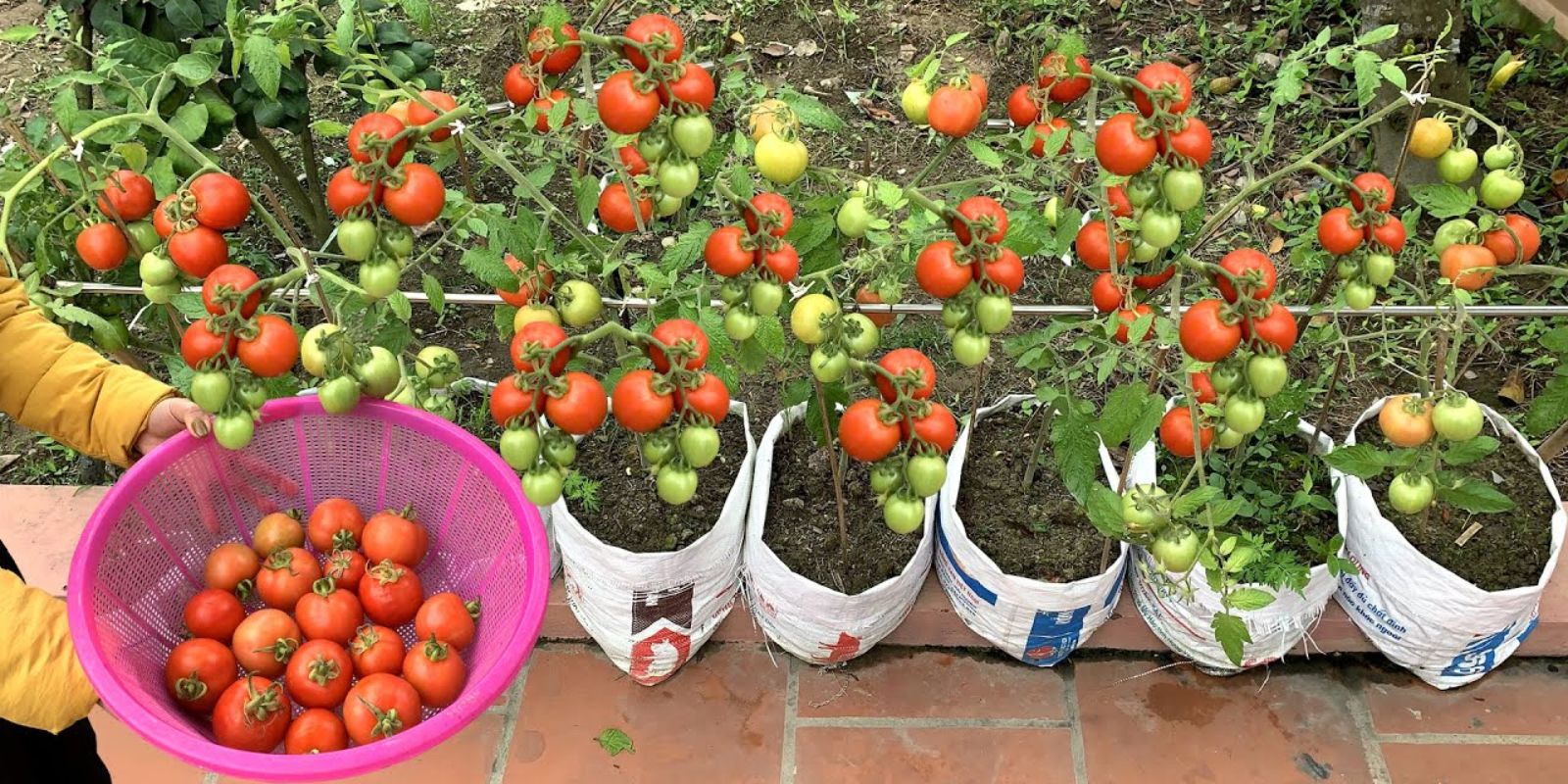Introduction
Tomatoes are a garden favorite, beloved for their versatility in cooking and their vibrant, juicy flavor. For many gardeners, growing tomatoes can be both a fun and rewarding experience. However, to achieve a bumper crop, employing specific techniques that seasoned farmers use can make all the difference. One such trick is planting tomatoes deeper than usual, a method that not only enhances plant stability but also boosts root development. In this article, we will explore the essential steps to grow tomatoes effectively, including this farmer’s secret, and how to apply it for a flourishing tomato garden.
1. Selecting the Right Tomato Varieties
A. Understanding Tomato Types
Tomatoes come in various types, each suited to different growing conditions and uses:
- Determinate Tomatoes: These varieties grow to a fixed height and produce fruit all at once. They are ideal for small gardens or containers.
- Indeterminate Tomatoes: These plants continue to grow and produce fruit throughout the growing season, making them suitable for larger gardens and ongoing harvests.
B. Choosing Varieties
- Climate Adaptation: Select varieties that are well-suited to your local climate. For instance, choose heat-tolerant varieties if you live in a hot area or cold-tolerant types for cooler regions.
- Disease Resistance: Opt for varieties with resistance to common tomato diseases like blight, fusarium, and verticillium wilt to ensure a healthy crop.
2. Preparing the Soil
A. Soil Requirements
Tomatoes thrive in well-drained, nutrient-rich soil. The ideal soil is loamy with a pH between 6.2 and 6.8.
B. Soil Enrichment
- Compost: Incorporate compost or well-rotted manure into the soil to enhance fertility and improve soil structure.
- Soil Testing: Conduct a soil test to determine nutrient levels and pH. Amend the soil as needed based on test results.
C. Soil Preparation
- Tilling: Loosen the soil with a garden fork or rototiller to improve aeration and root penetration.
- Mulching: Apply a layer of mulch around the plants to retain moisture, suppress weeds, and regulate soil temperature.
3. The Trick: Deep Planting
A. Why Deep Planting Works
- Enhanced Root System: Planting tomatoes deeper than usual encourages additional root growth along the buried stem. This creates a more robust root system, which improves the plant’s stability and nutrient uptake.
- Increased Disease Resistance: The deeper planting can also help reduce the risk of certain soil-borne diseases by keeping the lower part of the plant away from the soil surface where diseases are more prevalent.
B. How to Plant Deep
- Prepare Seedlings: Choose healthy tomato seedlings with strong stems and leaves. Remove the lower leaves from the seedlings to expose the stem that will be buried.
- Dig a Hole: Dig a hole deep enough to accommodate the seedling with at least half of the stem below the soil surface. The hole should be about 6-8 inches deep.
- Planting: Place the seedling in the hole, positioning it so that the top leaves are just above the soil level. Gently fill the hole with soil and tamp it down to remove air pockets.
- Watering: Water the newly planted seedling thoroughly to help settle the soil and reduce transplant shock.
4. Supporting Tomato Plants
A. Why Support is Essential
Supporting tomato plants prevents them from sprawling on the ground, which can lead to disease, fruit rot, and poor air circulation. It also keeps the fruit clean and off the soil.
B. Types of Support
- Stakes: Drive a stake into the ground next to the tomato plant and tie the plant to the stake with soft ties. This method is ideal for determinate varieties.
- Cages: Use tomato cages to support indeterminate varieties. The cage will surround the plant, providing support as it grows taller.
C. Installation
- Timing: Install stakes or cages at the time of planting to avoid disturbing the roots later.
- Maintenance: Regularly check and adjust ties or supports as the plant grows to ensure proper support and prevent damage.
5. Watering and Feeding
A. Watering Needs
- Consistent Moisture: Tomatoes require consistent moisture to thrive. Water the plants deeply and regularly, especially during dry periods. Avoid overhead watering to reduce the risk of fungal diseases.
- Drip Irrigation: Consider using a drip irrigation system to deliver water directly to the root zone and minimize water waste.
B. Fertilizing
- Balanced Fertilizer: Use a balanced fertilizer with equal parts nitrogen, phosphorus, and potassium (e.g., 10-10-10) or a tomato-specific blend.
- Application: Apply fertilizer according to package instructions or soil test recommendations. Generally, fertilize every 4-6 weeks during the growing season.
- Avoid Over-Fertilizing: Too much nitrogen can lead to excessive foliage growth at the expense of fruit production.
6. Managing Common Tomato Issues
A. Pests and Diseases
- Common Pests: Watch for pests like aphids, tomato hornworms, and whiteflies. Use organic pest control methods such as insecticidal soap or neem oil.
- Disease Management: Prevent diseases like blight and wilt by practicing crop rotation, using disease-resistant varieties, and maintaining good garden hygiene.
B. Pruning
- Removal of Suckers: Prune off suckers (small shoots that grow between the main stem and branches) to improve air circulation and focus the plant’s energy on fruit production.
- Lower Leaves: Remove the lower leaves to reduce the risk of soil-borne diseases and improve air circulation around the base of the plant.
Conclusion
Growing tomatoes successfully involves more than just planting seeds; it requires careful planning, soil preparation, and ongoing care. By applying the trick of deep planting, you can enhance root development and improve plant stability, leading to healthier, more productive tomato plants. Combine this technique with proper soil enrichment, supportive practices, and regular maintenance to achieve a bountiful tomato harvest. Share your gardening experiences and inspire others to cultivate their own thriving tomato gardens using these expert tips.
Motivation:
Transform your tomato garden with this farmer-approved trick and enjoy a lush, productive harvest. Share your gardening journey and inspire others to grow their own delicious tomatoes!
Hashtags:

